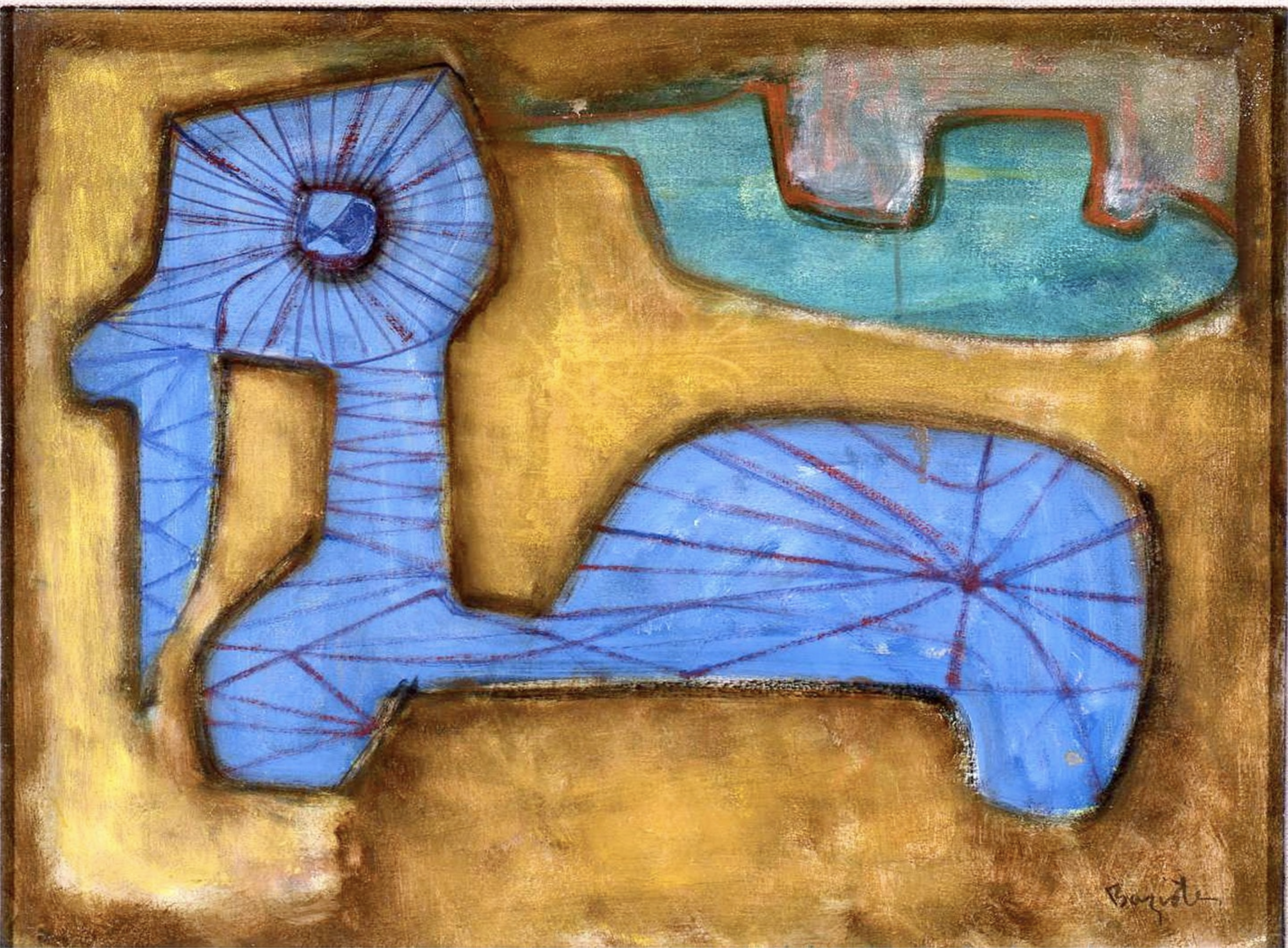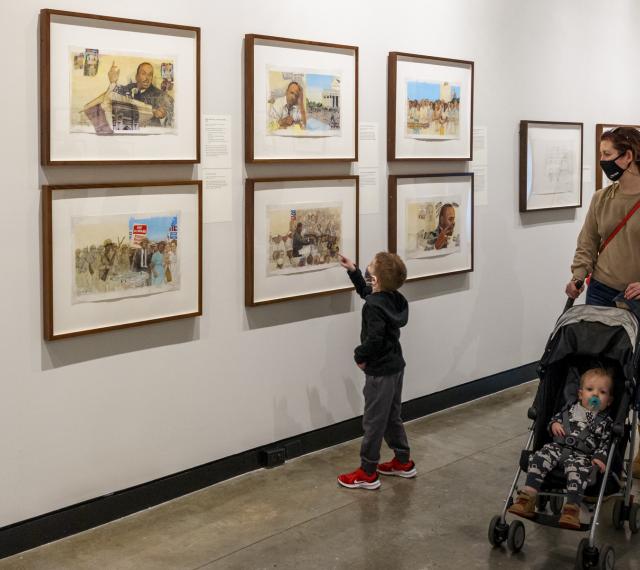William Baziotes was a key figure in the emergence of Abstract Expressionism in New York during the early 1940s. Prompted by Surrealist émigré Roberto Matta Echaurren, Baziotes and other colleagues, including Motherwell, Lee Krasner, and Jackson Pollock, he began to experiment with spontaneous methods of painting. By 1946 Baziotes had developed his mature style of subtly colored, biomorphic forms, combined with delicate linear elements in a nuanced, painterly field. Baziotes evolved his subjects intuitively from random gestures informed by his mastery of drawing and painting techniques:
“The suggestion then becomes a phantom that must be caught and made real.”
Toy Animal was created during a critical moment in Baziotes’ career. In that year, 1947, he became the first Abstract Expressionist to gain far-reaching attention with the award of the top prize at the Art Institute of Chicago exhibition Abstract and Surrealist Art. The fantasy creatures of Toy Animal reflect Baziotes’ reverence for the poetic mysteries of nature. Suspended in an atmospheric haze, these evocative shapes resemble both microscopic organisms and distorted human or animal forms in an elusive drama. The loose linear web of the vibrantly colored predominant form suggests a memory of Baziotes’ early years working for a stained-glass company in Reading, Pennsylvania.
Text Written by Gail Stavitsky (Chief Curator)
This work is not on view.




